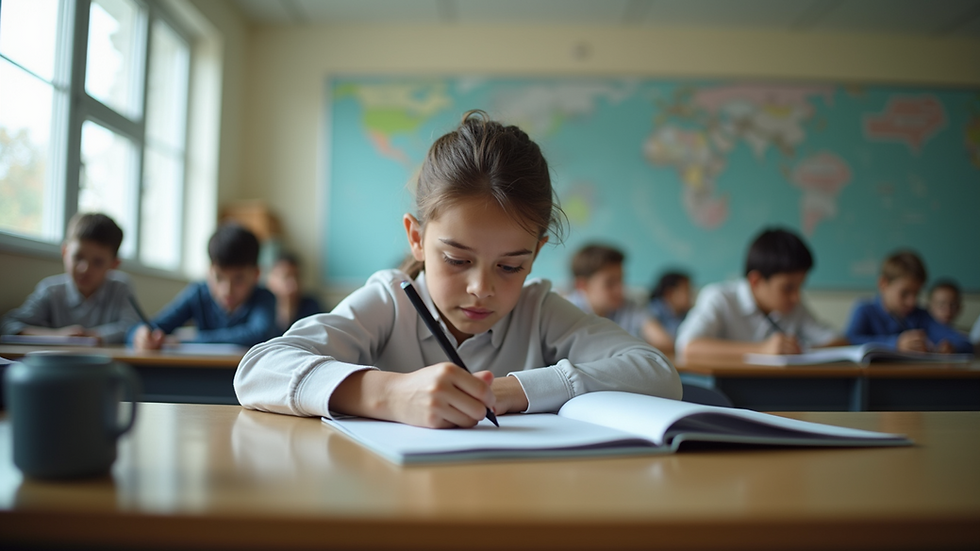Personalized Learning Plans for Student Success
- Mimi Rothschild

- Nov 3
- 3 min read
Education is evolving rapidly, and one of the most promising approaches to help students thrive is through personalized learning. This method tailors education to meet the unique needs, strengths, and interests of each learner. By focusing on individual progress rather than a one-size-fits-all curriculum, personalized learning can transform how students engage with their studies and achieve success.
Understanding Personalized Learning Benefits
Personalized learning benefits both students and educators by creating a more flexible and responsive educational environment. Unlike traditional teaching methods, personalized learning adapts to the pace and style of each student. This approach encourages active participation, boosts motivation, and fosters deeper understanding.
Some key personalized learning benefits include:
Improved engagement: Students are more interested when lessons connect to their interests and goals.
Better retention: Tailored instruction helps students grasp concepts more effectively.
Increased confidence: Mastery of material at their own pace builds self-esteem.
Enhanced critical thinking: Personalized tasks challenge students appropriately, promoting problem-solving skills.
Greater autonomy: Learners develop responsibility for their education, preparing them for lifelong learning.
These benefits contribute to a more inclusive classroom where diverse learners can excel.

How Personalized Learning Plans Drive Success
A personalized learning plan is a strategic tool that outlines a student’s learning goals, preferred methods, and progress checkpoints. It serves as a roadmap for both students and educators, ensuring that instruction aligns with individual needs.
Components of an Effective Personalized Learning Plan
Assessment of strengths and weaknesses: Identifying what a student already knows and where they need support.
Goal setting: Defining clear, achievable objectives tailored to the learner’s aspirations.
Customized learning activities: Selecting resources and tasks that match the student’s style and pace.
Regular progress monitoring: Tracking achievements and adjusting the plan as needed.
Collaboration: Involving teachers, parents, and the student in the planning process.
Practical Example
Consider a middle school student struggling with math but excelling in reading. A personalized learning plan might include extra math practice using interactive software, paired with reading assignments that incorporate math vocabulary. This dual approach addresses weaknesses while leveraging strengths.

Implementing Personalized Learning in the Classroom
To successfully implement personalized learning, schools and educators need to adopt flexible strategies and tools. Here are actionable recommendations:
Use technology wisely: Digital platforms can provide adaptive learning experiences and instant feedback.
Create varied learning stations: Different areas in the classroom can cater to diverse activities and learning styles.
Encourage student choice: Allow learners to select topics or projects that interest them.
Provide ongoing support: Regular check-ins help students stay on track and feel supported.
Train educators: Professional development ensures teachers are equipped to design and manage personalized learning plans.
By integrating these practices, classrooms become dynamic spaces where every student can flourish.
Overcoming Challenges in Personalized Learning
While personalized learning offers many advantages, it also presents challenges that educators must address:
Time constraints: Developing and managing individual plans can be time-consuming.
Resource limitations: Not all schools have access to the necessary technology or materials.
Balancing standardization: Ensuring students meet curriculum standards while personalizing learning.
Student accountability: Encouraging learners to take ownership of their progress.
Solutions include leveraging collaborative tools, prioritizing professional development, and fostering a growth mindset among students and staff.
The Future of Education with Personalized Learning Benefits
As education continues to evolve, personalized learning benefits will become increasingly vital. Schools that embrace this approach can expect:
Higher student achievement: Tailored instruction leads to better academic outcomes.
Greater equity: Personalized learning can close achievement gaps by addressing individual needs.
Lifelong skills: Students develop self-directed learning habits essential for future success.
Innovative teaching: Educators can experiment with new methods and technologies.
Investing in personalized learning today sets the stage for a more effective and inclusive education system tomorrow.

By focusing on each learner’s unique journey, personalized learning plans unlock the full potential of students, paving the way for lasting success.


























Comments